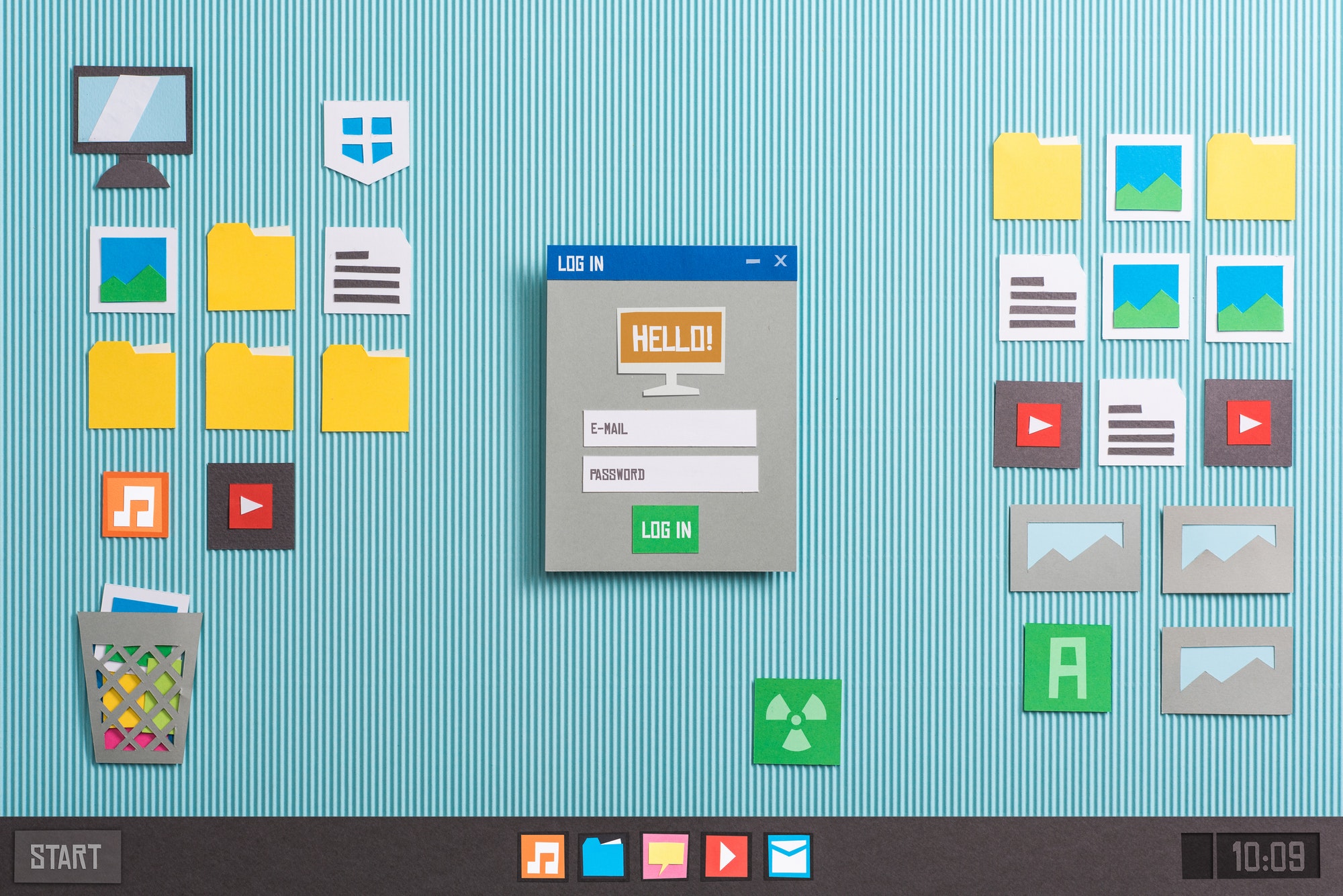Branding is the ongoing process of creating a unique identity for your company. It’s what distinguishes one company from all of the others that offer the same products and services. Businesses use branding to create emotional associations between their target audience and their products. If a business was a person, its brand would be its personality and style. So, how does branding help a startup?
Very few businesses can get away with ignoring branding. Even fewer startups can. If you have competition, you need the branding to make your company memorable and relatable.
Good Branding Vs. Bad Branding In Startups

There may be no better teacher than a convincing example. When it comes to branding and startups, there are certainly plenty. Some stand out as examples of exactly what to do. Others stumbled coming out of the gate, and quite frankly paid a price. Let’s start by looking at some examples that got the branding right from the beginning.
Slack
Slack has emerged as one of the most popular brands for collaboration in the workplace. Only five years old, it has made a huge splash. One of the reasons for its success is that Slack’s founders got branding right from the very beginning.
Because it knew it had to position itself as a credible brand that would solve the problems of the corporations to which they were marketing, Slack had to portray itself as being reliable and innovative. On the other hand, they also needed widespread adoption and enthusiasm from the people who would be using the product daily.
So, their branding efforts included portraying the highly useful functionality of their product while also incorporating elements of fun and humor. Slack has done such a good job of branding, that it’s widely held as a great corporate branding example.
Lyft
When it comes to branding, startups face the challenge of finding ways to stand out from the competition. Sometimes, it’s best to approach this competitively. This could be called the ‘Anything you can do, I can do better’ approach. The other approach is to differentiate entirely. Lyft opted for the second approach.
When the company launched, Uber was already well-established in many markets. The founders of Lyft understood that they weren’t likely to disrupt Uber by doing what Uber was already doing. So, they took a different approach.
While Uber opted for a sleek logo using dark colors. Lyft went for something blockier and decidedly friendlier. Uber launched by emphasizing a sleek, black car service aimed at creating an elite experience. Rather than portraying their service as more elite, Lyft created a more casual, everyman experience.
Even though both companies offer identical services, branding couldn’t be more different. As a result, Lyft was able to carve out its own space in the market.
Of course, there have been some branding misfires along the way. Here are some common mistakes that startups make.
Being Inconsistent In Omnichannel Marketing

Visual inconsistency can be a real problem for startups. It’s also easy to lose track of this. Every company should have a visual assets library, and the time to start creating that is during the planning stages of the business. The visual assets library should include logos, taglines, hero images, and other visual content to be used across every relevant channel. Whether a customer interacts with a brand in-store, online, or sees a company truck on the highway, the visual experience should be consistent.
Turning Branding Into A Corporate Silo
Branding should never be treated as a centralized effort that is fully created and executed at the corporate level. People don’t care to engage much with corporations. Instead, they engage with people. Educate your employees about your branding, get them enthusiastic about it, and then let them loose. Customers are more likely to buy your branding efforts when dealing directly with your associates than they are to buy any official corporate communications or ads.
Overusing Buzzwords

As people launch startups, certain words and phrases tend to emerge. Then there are the widely used buzzwords that are simply present in most businesses. This jargon sometimes finds its way into marketing and conversations with customers.
Unfortunately, they aren’t just meaningless to many customers. They’re downright irritating. Branding efforts must kill off any needless use of jargon and buzzwords. Use plain-speak instead.
Branding Can Stand In For The Face Face Connections That Are Often Absent In E-Commerce
Today branding is more important than ever. One of the key reasons for this is the prevalence of online commerce. Customers in both the B2B and B2C sectors don’t just buy products online, they have entire relationships with businesses online. This takes away the human element.
There’s no salesperson, business owner, or another staff member for people to meet in person who becomes the face of the brand to them. Instead, businesses are just faceless entities. Even when brands are sold in brick-and-mortar locations, the people customers interact with aren’t invested in the business that produces the brand. Think of big box stores and all of the goods sold there. There’s no real representation of your startup.
Startups need the branding to stand out from one another, and to create personal connections with their audiences. With branding, you create that personality that customers connect with.
Startups Begin With A Clean Branding Slate
The thing that is most challenging for startups can also be the most helpful. You have the chance to build your brand from the ground up. You can examine your competitors and identify how you want to stand out from them. You can determine the associations you want people to make when they think of your business. Most importantly, you can plan what you want your branding to be and what you don’t want it to be.
At the same time, while you have a great opportunity, the pressure is on. Rebranding can be a costly and risky undertaking. Some companies rebrand with great success. Today, people associate Target with well-designed stores, Starbucks, high-end designer clothing, and a great appeal to upper-middle-class families. In the nineties, they were just another store that sold cheap goods. Until they rebranded successfully, nothing differentiated them from Walmart or Kmart.
On the other hand, there is plenty of rebranding failure as well. Radio Shack tried to reinvent itself as ‘The Shack’. Radioshack had become hugely popular as an electronics supply store for hobbyists and the DIY crowd. The rebrand left those customers behind so the store could become a cell phone, high-end electronics, and audio store. In the end, they couldn’t compete with the stores that were already in that space.
Neightan White, Chief Marketing Officer at Supreme Dissertations says, “Startups that do the best job of creating a brand will learn from both the successes and failures of other brands. Radio Shack abandoned its most loyal audience. Target formed relationships with designers and others so that they could offer better products than their competitors.”
There’s A Lot at Stake With Startup Branding

When a startup successfully creates its brand, it controls its narrative. They control the perceptions, the emotional associations, and the conversations. This is key. When a startup fails to do this, it gives that control to its competitors. Rest assured, if you don’t establish a strong brand, others will fill in the blanks with something negative.
Several Elements Make Up Startup Branding
Several elements contribute to startup branding. Each item plays an important role in creating the ‘personality’ of your brand.
Logo
This is the instantly recognizable, visual element that will become associated with your brand. A well-designed logo will make your audience think of your brand, this will, in turn, open up all of the associations they have created with that brand. Think of your favorite, neighborhood restaurant. You see the logo, and you think of great food, time with friends and family, and friendly service. A successful logo will stand out from the others, but be simple enough to be memorable.
Persona
Businesses that do branding the right way can create a bit of a persona or character. It’s the brand personified. It’s a bit like having a mascot, but the mascot is optional. Developing a character is key because people tend to do business with brands that are relatable to them. For example:
The Wall Street Journal is trustworthy, reliable, and knowledgeable about finance.
Mt. Dew is young, athletic, and loves the outdoors.
Burt’s Bees is organic, natural, and environmentally aware.
Harley Davidson is intense and rebellious.
Remember that people are attracted to branding personas that represent how they see themselves, or how they would like to be.
Content
Content is everything your audience reads, watches, or listens to as it relates to your brand. Content is your blog, web content, social media posts, online conversations and more. What you share with your audience and the tone that you use contribute to your branding.
Whatever choices you make in terms of building your brand, content is what communicates those choices to your audience. It should be reflective of your brand persona and targeted to your audience. It must also be of the best quality at every turn. Professional agencies like Studicus can help you find your content voice.
Experience
The experience that you provide your customers is a part of your brand as well. Take a moment to consider what you see, hear, read, and otherwise experience when you visit the websites, social media pages, even brick and mortar locations of well-known brands.
For example, every tech-forward brand often provides cutting-edge experiences, to show their expertise. Family entertainment brands like Disney often focus on making experiences kid-friendly.
When designing the places where people will interact with your business, you must consider branding. Their experiences will contribute to their thoughts and perceptions about your business.
Final Thoughts
For Startups, branding is both an opportunity and a necessity. It allows them to inform the emotions and thoughts that others have when they think of their company. Branding is the tool that startups can use to make a mark while their products and services are still in the proving stages. A brand is the one thing that can distinguish one business from another in its space. For a startup, this is key to survival. Hopefully, this gave you a better understanding of the question of how branding helps a startup.
Author Bio: Kristin Savage nourishes, sparks, and empowers using the magic of a word. Along with pursuing her degree in Creative Writing, Kristin was gaining experience in the publishing industry, with expertise in marketing strategy for publishers and authors. Now she works as a freelance writer at WowGrade and BestEssayEducation. Kristin runs her own FlyWriting blog.
Guest Blogger Bio:

Kristin Savage nourishes, sparks, and empowers using the magic of a word. Along with pursuing her degree in Creative Writing, Kristin was gaining experience in the publishing industry, with expertise in marketing strategy for publishers and authors. Now she works as a freelance writer at GrabMyEssay. You can find her on Facebook.
Contact Matchbox Design Group Today!
If your website could use a refresh, if you’re looking to drive more traffic to your site, or you would like to submit a guest post, fill out the form below and we’ll contact you to learn more about your digital needs.
Startup Branding FAQ
Q: How much should a startup spend on branding?
A: Determining the exact budget for startup branding can vary based on several factors such as industry, target audience, and overall business goals. However, a common recommendation is to allocate around 5-10% of the overall budget for branding efforts. It’s crucial to strike a balance, ensuring enough investment to create a strong, memorable brand without overstretching limited resources.
Q: Why is branding so powerful?
A: Branding holds immense power as it goes beyond just a logo or name. It shapes the perception of your startup, influencing how customers feel and think about your products or services. A strong brand fosters trust, loyalty, and emotional connections, giving your startup a distinct identity in a crowded market. It creates a lasting impression that resonates with your target audience, often translating into customer retention and advocacy.
Q: Why is branding so hard?
A: Crafting a compelling brand involves more than just designing a logo. It requires a deep understanding of your target audience, a clear articulation of your unique value proposition, and consistency across various touchpoints. The challenge lies in encapsulating the essence of your startup in a way that resonates with customers, differentiates you from competitors, and remains adaptable to growth and market changes.
Q: What happens if there is no branding?
A: Without branding, a startup risks blending into the background, and becoming a faceless entity in the market. Lack of differentiation makes it harder for customers to connect emotionally with the brand. Competitors may define the narrative, and the startup loses control over perceptions. Strong branding is the key to standing out, creating a memorable identity, and influencing how the audience perceives and engages with the business.
Q: Does a small business need branding?
A: Absolutely. Small businesses, just like larger enterprises, can benefit significantly from effective branding. It helps establish a unique identity, build trust with customers, and compete in the market. Small businesses with a strong brand are more likely to attract and retain customers, even in competitive industries, fostering long-term success.
Q: Does a startup need a logo?
A: Yes, a logo is a vital component of startup branding. It serves as a visual representation of your brand and facilitates instant recognition. A well-designed logo communicates the essence of your startup and contributes to building brand awareness. It’s a foundational element that reinforces the identity of your business in the minds of your audience.
Q: Should you put your logo on everything?
A: While it’s essential to showcase your logo across various touchpoints for brand consistency, strategic placement is crucial. Avoid overloading every piece of communication with the logo. Focus on prominent placements such as your website, marketing materials, and products. This ensures that when customers encounter your logo, it leaves a lasting and positive impression.
Q: What not to put in a logo?
A: A cluttered or overly complex design, illegible fonts, and intricate details that may not scale well are elements to avoid. Additionally, steer clear of using too many colors, as simplicity often enhances memorability. Ensure that the logo remains versatile across different mediums and sizes, keeping it clean and representative of your brand’s essence.
Q: When should you start branding?
A: Ideally, startups should begin branding efforts during the early stages of development. The foundational elements, including understanding the target audience, defining the unique value proposition, and creating a memorable brand identity, should be established early. Starting the branding process from the outset ensures a consistent and cohesive brand image as the startup evolves.



